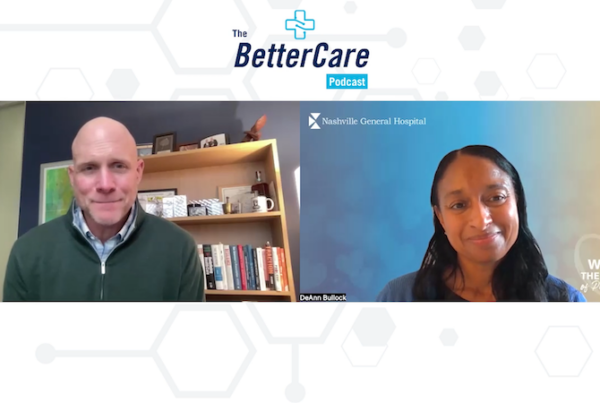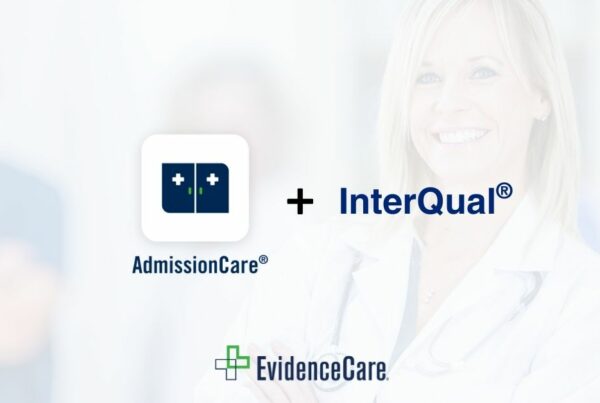Written by Carol Howard, VP of Clinical Strategy
The CMS Two-Midnight Rule has been in full effect for Medicare Advantage (MA) plans for about nine months as of this writing. In case you aren’t familiar, the Two-Midnight Rule mandates that a patient’s hospital stay must span at least two midnights to qualify for inpatient status, directly influencing reimbursement rates and compliance requirements.
In the MA Final Rule, however, CMS explicitly states that the two-midnight presumption does not apply to MA plans. In other words, the MA plan may focus its medical reviews on stays of any length in order to ensure compliance with the Two-Midnight Rule. This also means that the medical record must support the reasonableness of the clinician’s admission decision regardless of the total time spent in the facility.
Initially implemented to reduce high error rates for inpatient stays and extended outpatient services, the rule aimed to ensure patients receive appropriate care while controlling costs and reducing denials.
However, its application has proven complex, with exceptions like inpatient-only procedures and unforeseen circumstances adding layers of complication. Over the last few years, the two-midnight rule has impacted hospital revenue cycles, but not in the way that many hospital finance leaders would like.
The Impact of the Two-Midnight Rule on Denials
At the 2024 HFMA Annual Conference, we asked healthcare executives if they’re seeing any changes following the CMS Two-Midnight Rule, particularly in denials.
Robin Gantea, Executive Director of Utilization Management and Clinical Documentation Integrity from Baptist Health Jacksonville mentioned, “We haven’t seen changes in behavior related to the Two-Midnight Rule. We’re still facing the same types of denials, especially with short stays where payers push back post-discharge.”
This sentiment was echoed by Chris Spady, Division Vice President of Revenue Cycle at CommonSpirit Health, who added, “We are closely monitoring, but so far, there’s no significant change in payer behavior. We are still expecting challenges.”
Despite the initial hopes for reduced denials, the rule has, in fact, led to increased short-stay denials and demands for downgrades in many health systems.
Another anonymous VP of Revenue Cycle at a large Midwest health system shared, “We’ve seen more short-stay denials, and payers are pushing for downgrades to observation status, often without sufficient documentation to back it up.”
Another issue is “inpatient only” procedures. Previously, the Medicare Advantage plans pushed for IOP (Intensive Outpatient Program) to be outpatient, and now, if the hospital does not place the inpatient order correctly on those same procedures, they deny the claim.
The overarching concern among executives is the persistent pushback from payers, despite initial inpatient authorization. Compliant documentation has also become more challenging. With the rule requiring detailed documentation to justify inpatient status, hospitals have had to enhance their physician advisor programs and clinical documentation improvement (CDI) efforts. This has placed additional burdens on care management teams, affecting revenue cycle operations.
Why Compliance Is Difficult to Grasp
In a recent episode of the RACmonitor podcast titled “The Human Touch at the Intersection of Artificial Intelligence and Denied Claims,” Juliet B. Ugarte Hopkins, MD, ACPA-C (Medical Director, Phoenix Medical Management, Inc.) shared her insights on the CMS Two-Midnight Rule.
Dr. Hopkins highlighted a critical issue: “Many continue to misapply the concept of medical necessity. CMS made it clear that MA plans must utilize the rule, but there are no consequences for non-compliance.”
This lack of enforcement creates a significant loophole that payers can and do exploit, leading to continued denials and placing substantial financial strain on hospitals. The absence of a formal grievance process further exacerbates this issue, as hospitals are left with limited recourse to challenge denials effectively.
The podcast also emphasized the importance of accurate medical necessity documentation in navigating the complexities of the CMS Two-Midnight Rule.
Dr. Hopkins noted, “Utilizing the rule correctly and requesting additional documentation when warranted can help mitigate denials.”
We’ve also heard trends of payers requesting more charts to review medical necessity documentation – in the form of the dreaded CARC code 16 (request for more information) – and using AI to target certain claims.
This highlights the necessity for hospitals to implement clear and robust compliance documentation practices. Ensuring that all relevant medical necessity criteria are meticulously documented can play a crucial role in supporting claims and reducing the risk of denials.
Hospitals must invest in training and resources to improve documentation standards, thereby enhancing their ability to comply with the rule and secure appropriate reimbursements. This approach not only helps in managing denials but also contributes to overall operational efficiency and financial stability.
Common Challenges and Solutions
Challenge 1: Inconsistent Application of the Rule
Hospitals may be experiencing inconsistent application of the Two-Midnight Rule by payers, leading to confusion and financial losses.
Robin Gantea mentioned, “We’re still fighting it from an inpatient interval standpoint, with payers using different criteria based on what benefits them.”
Solution: Strengthening contract language and ensuring clarity on which criteria (InterQual, MCG, or Medicare Two-Midnight Rule) will be applied can mitigate these inconsistencies.
Challenge 2: Physician Documentation
Proper documentation by physicians remains a significant hurdle.
An anonymous VP of Revenue Cycle highlighted, “Doctors and nurses often lack training on how to document medical necessity correctly, impacting compliance and revenue.”
Solution: Implementing medical necessity documentation software and comprehensive training programs for physicians and residents on the importance of documentation.
Challenge 3: Denials and Appeals
Denials, especially for short stays, continue to be a major challenge.
As Chris Spady pointed out, “We are not seeing significant changes in payer behavior, and denials remain a constant issue.”
Be on the lookout for post discharge audits as the Medicare Advantage plans do not have to follow the two-midnight presumption. Ensure that your Utilization teams have medical necessity before changing a status from outpatient observation to inpatient.
Solution: Establishing a robust denial management process, including peer-to-peer reviews and third-party physician reviews, can improve overturn rates and ensure appropriate reimbursements. Appeal all denied inpatient claims, if possible, especially those that would have been approved under traditional Medicare.
Robin Gantea shared, “We successfully overturn about ninety-five percent of the cases when we escalate them to peer-to-peer reviews.”
Actionable Recommendations for Hospital Leadership
To navigate the CMS Two-Midnight Rule effectively, hospital leadership should consider the following actionable recommendations:
-
- Enhance Training and Education: Regularly train physicians, nurses, and care management teams on the importance of accurate documentation and the specifics of the Two-Midnight Rule.
- Strengthen Contract Language: Ensure that contracts with payers clearly define the criteria for inpatient admissions and require adherence to the Two-Midnight Rule.
- Leverage Technology: Use hospital admission software like AdmissionCare to integrate medical necessity criteria into the EHR, ensuring seamless documentation and compliance.
- Implement Robust Denial Management: Develop a comprehensive denial management process, including peer-to-peer reviews and engaging third-party experts for complex cases.
- Promote Interdepartmental Collaboration: Foster collaboration between revenue cycle teams, utilization review, and clinical teams to ensure a unified approach to compliance and revenue management.
- Create Reporting: Monitor and track your month over month INPT vs OBS rates and payer-level denial reports by length of stay, as just two examples.
By adopting these strategies, hospital leadership can better navigate the complexities of the CMS Two-Midnight Rule, ensuring compliance, reducing denials, and safeguarding revenue.
For a deeper dive into the details of the CMS Two-Midnight Rule, check out our blog, “The CMS Two-Midnight Rule and Medical Necessity Criteria.”











